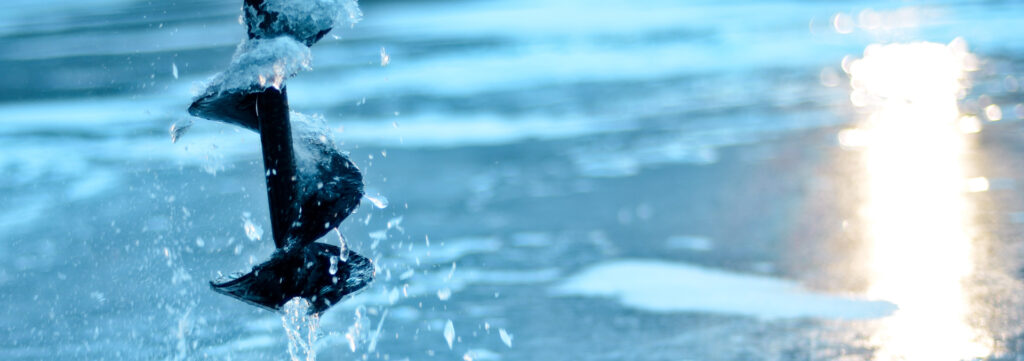In early winter, the much-anticipated annual ice-fishing season has anglers getting excited. This unique fishery mostly takes place in the Interior of B.C. where, from December to March, it gets and stays cold enough to freeze hundreds of lakes. Many anglers look forward to this fishery as a main winter activity. Involving anglers of all ages, it can be a real family affair. The most sought-after species of game fish are rainbow, eastern brook, and lake trout, along with kokanee and even burbot.
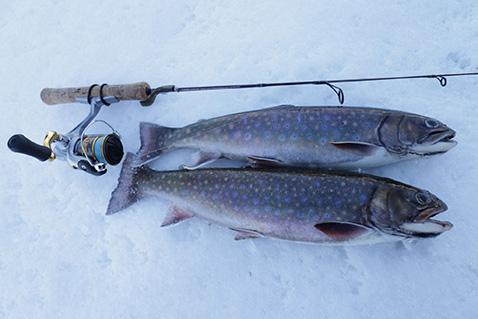
To be a successful ice fisher, there are some important things to consider before you venture out. Check your freshwater regulations to be sure that there is not an ice-fishing closure or bait ban in place on the water body you want to fish. Note any special conservation regulations concerning burbot, which have been overfished in a number of Interior lakes. Ice thickness should be a minimum of 10 centimetres to be safe for foot travel, and twice that for ATVs and snowmobiles.
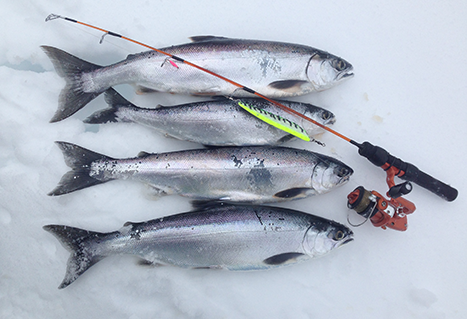
The basic gear an angler should have is:
- a device to make a hole through the ice (hand-powered ice auger, gas-powered ice auger, electric auger, or power saw)
- ice-fishing rod or small light spin rod
- rod holder
- basic tackle (leader line, hooks, small jigs, attractor spoons, swivels, and small split shot or worm weights
- bait (deli shrimp, earthworms, krill, mealworms, single salmon eggs, salmon roe, woodworms, or Power Bait).
- Warm clothing layers. The weather can change quickly, so be prepared for all conditions with warm clothing in layers under a hooded, windproof and waterproof jacket. Waterproof boots, warm socks, a scarf, a toque, and gloves are musts.
- A ladle or scoop. Keep the hole ice- and slush-free throughout the day.
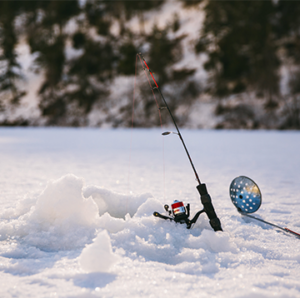
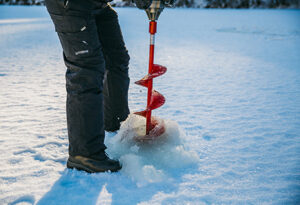
Nice-to-have ice-fishing gear:
- A shelter. This is nice to have because shelters keep you protected from the elements, and provide comfort for a longer time fishing. Because a shelter is dark inside, it can also allow you to see fish under the ice. Since fish take baits and lures very softly during winter, actually seeing a fish bite can be helpful when setting the hook.
- Something to sit on. A lawn chair would be a little more comfortable than sitting on an upside-down bucket. However, buckets work, and can double as a way to carry your gear out on the lake.
- A toboggan or sled makes sliding the auger and gear out to your fishing spots easier, especially if you bring a shelter and chairs too. One trip across the ice is always a good thing.
- A portable fishfinder. You can still find fish by moving around the lake, and playing with the fishing line depths of your set-up. But having a portable fishfinder will help you pinpoint where the fish are more efficiently.
- A vacuum bottle filled with a warm drink. If you’re bringing the kids, hot chocolate or warm apple cider could be considered a must-have. Otherwise, it’s nice to have coffee, tea, or hot soup to sip on when the fishing gets slow or the wind starts to blow.
Where to Find Fish While Ice-Fishing
Since fish tend to travel in schools at this time of year, it is essential to scout a lake to try to locate where the main concentrations of fish are holding. Try off points of land, or in bays where the bottom tapers up to the shore evenly. When you have picked a location, be sure to make several holes in a line from deep to shallow to figure out where in the water column the fish are located. When you first drop your lure into a hole, let it hit bottom, and then raise it up 60 centimetres (a couple of feet). Some days you will find success by fishing five to 10 minutes in one hole, then moving to another until you locate the fish. If you are fishing in three metres (10 feet) of water or deeper, vary the depths of your lures, since the fish may be stratified at different depths in certain spots on the lake. If there are several anglers fishing together, always vary your lure choices; that will increase your chances. Like any other type of fishing, there will be various times of day when the fish “turn on” – just exercise some patience, and you’ll be successful.
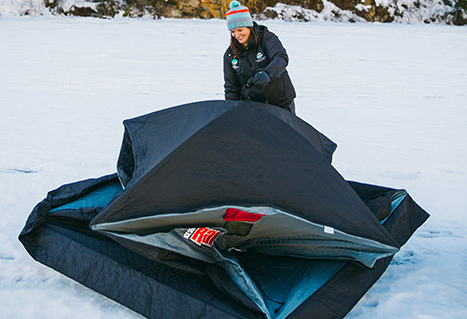
This blog item is a general guide to ice fishing. Feel free to make your own variations to the suggested techniques above that will suit your personal preferences. Ice fishing is a fun, sociable winter activity for young and old – get out there and give it a try.
Author: Nick Basok; Freshwater Fisheries Society of BC Fishing Ambassador
Photos: Justine Russo and Nick Basok
